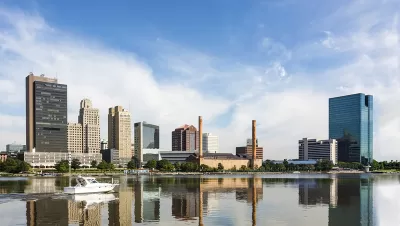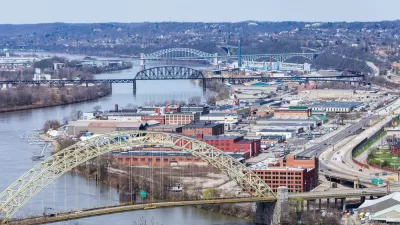The city of Toledo, Ohio provides a case study in how the best intentions of attracting degree-holding Millennials can come up short.

"Toledo continues to show signs of becoming more cool, hip, and attractive to college-educated young people," report Tom Henry and Gabby Deutch,"[b]ut statistics show the rebranding effort isn’t generating results as quickly as people want."
The article shares the results of a study of U.S. Census data commissioned by the Pew Charitable Trusts, finding that "Toledo ranked only 455th out of 521 U.S. cities for percentage growth of degree-holding Millennials between 2000 and 2014."
The article also compares the data on Millennials in Toledo to the data from other cities likes Baltimore, St. Louis, and Pittsburgh, which have all had more success in the effort. The article describes the data from Toledo as an example of the limitations of the "Rust Belt chic" model of redeveloping old buildings "with character," but "nearly 10 years after the Toledo Regional Chamber of Commerce launched a campaign to halt the so-called 'brain drain' Toledo and other Rust Belt cities were experiencing, the city is finding that retaining and attracting more college-educated Millennials require more than just a good coffeehouse," write Henry and Deutch.
The article calls on national experts, like William Frey from the Brookings Institution’s Metropolitan Policy Program, and local academics to paint a detailed portrait of the many community and economic development underway in recent years in Toledo.
FULL STORY: Toledo struggles to attract, keep young professionals

Study: Maui’s Plan to Convert Vacation Rentals to Long-Term Housing Could Cause Nearly $1 Billion Economic Loss
The plan would reduce visitor accommodation by 25,% resulting in 1,900 jobs lost.

North Texas Transit Leaders Tout Benefits of TOD for Growing Region
At a summit focused on transit-oriented development, policymakers discussed how North Texas’ expanded light rail system can serve as a tool for economic growth.

Why Should We Subsidize Public Transportation?
Many public transit agencies face financial stress due to rising costs, declining fare revenue, and declining subsidies. Transit advocates must provide a strong business case for increasing public transit funding.

A Visual Celebration of Manhattan’s Chinatown Elder Community, Through Food
Lanterns, cafeteria trays, and community connection take center stage in this stunning photo essay.

How to Make US Trains Faster
Changes to boarding platforms and a switch to electric trains could improve U.S. passenger rail service without the added cost of high-speed rail.

Columbia’s Revitalized ‘Loop’ Is a Hub for Local Entrepreneurs
A focus on small businesses is helping a commercial corridor in Columbia, Missouri thrive.
Urban Design for Planners 1: Software Tools
This six-course series explores essential urban design concepts using open source software and equips planners with the tools they need to participate fully in the urban design process.
Planning for Universal Design
Learn the tools for implementing Universal Design in planning regulations.
City of Santa Clarita
Ascent Environmental
Institute for Housing and Urban Development Studies (IHS)
City of Grandview
Harvard GSD Executive Education
Toledo-Lucas County Plan Commissions
Salt Lake City
NYU Wagner Graduate School of Public Service





























